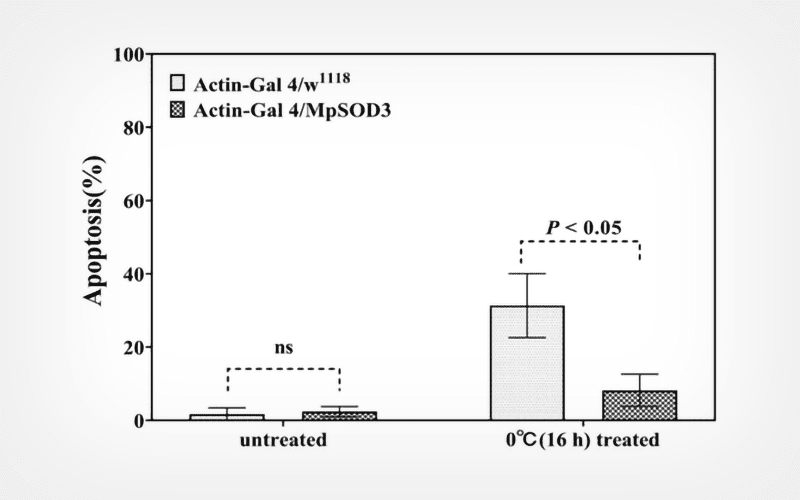CryoLetters Volume 46 - Issue 4
CryoLetters 46 (4), 213-230 (2025)
© CryoLetters, editor@cryoletters.org
doi.org/10.54680/fr25410110112
PERSPECTIVE: Advancements in cryopreservation techniques for human gametes and embryos: novel cryoprotectants and their influence on fertility preservation
A. S. Vickram*, C. Prasanth, S. Bharath, D. Jenila Rani, C. M. Mathan Muthu and B. Bhavani Sowndharya
- Department of Biotechnology, Saveetha School of Engineering, SIMATS, Chennai, 602105, India
*Corresponding author’s E-mail: vickramas.sse@saveetha.com
Abstract
Background
Cryopreservation has transformed fertility preservation by enabling the long-term storage of gametes and embryos. Although traditional procedures such as slow freezing and vitrification are routinely used, recent innovations and new cryoprotectants have had a significant impact on reproductive medicine outcomes.
Objective
This review examines advances in cryopreservation techniques, the influence of novel cryoprotectants, and the implications for gamete and embryo survival, viability, and clinical outcomes in fertility preservation.
Materials and methods
We conducted a comprehensive review of the existing literature on classic and novel cryopreservation methods for sperm, oocytes, and embryos. Advances in vitrification methods, the invention of novel cryoprotectants, and comparative effectiveness and toxicity assessments were all evaluated. Clinical data on survival rates, implantation rates, and fertility preservation were thoroughly reviewed.
Results
Improvements in vitrification procedures have drastically enhanced oocyte survival and developmental potential, resolving some of the previously linked cryopreservation issues. Innovative ways to cryopreserve have enhanced sperm survival and motility after thawing. The focus of embryo cryopreservation has switched from traditional slow freezing to precise vitrification, resulting in higher survival rates and better clinical results. Novel cryoprotectants have shown promise in terms of reduced toxicity and improved cryosurvival while retaining biological integrity. Overall, these advances have had a positive impact on fertility preservation techniques and clinical success rates. CONCLUSION: Emerging cryopreservation methods, such as breakthroughs in vitrification protocols and the identification of new cryoprotectants, have significantly improved gamete and embryo storage efficiency. Such developments not only increase the longevity and quality of cryopreserved materials, but they also improve therapeutic outcomes in fertility preservation. Additional study and optimization are required to standardize these procedures for optimal use in a variety of patient populations.
Keywords: cryopreservation advancements; embryo cryopreservation; ethical cryopreservation practices; innovative cryoprotectants; sustainable biomedical practices.
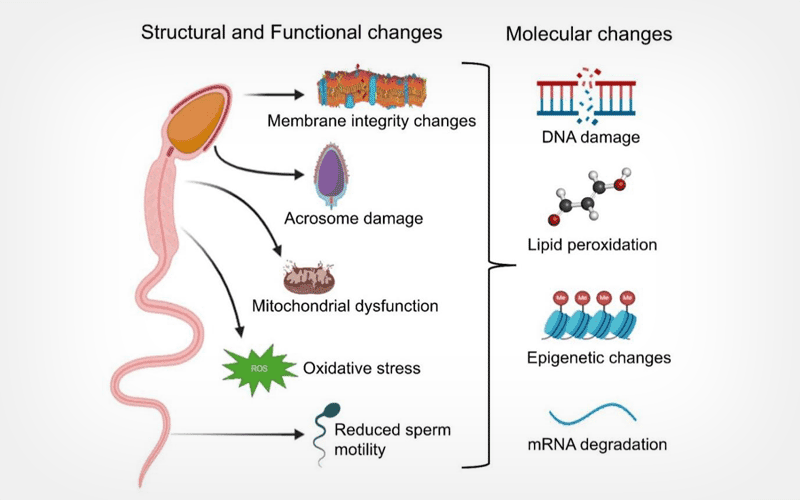
CryoLetters 46 (4), 231-237 (2025)
© CryoLetters, editor@cryoletters.org
doi.org/10.54680/fr25410110312
The presence of vitamin C enhances the protection of cholesterol-cyclodextrin and vitamin E-cyclodextrin in cryopreservation of bull semen
Allaeddine KHELLOUF1*, Amine BENBERKANE1, Lamia TAOUZINET2, Sofiane FATMI3 and Mokrane IGUER-OUADA1
- Université de Bejaia, Faculty of Nature and Life Sciences, Associated Laboratory in Marine Ecosystems and Aquaculture, 06000 Bejaia, Algeria
- Centre de Recherche en Technologies Agro-Alimentaire, Route de Targa Ouzemmour, Campus Universitaire, Bejaia 06000, Algeria
- Université de Bejaia, Faculty of Technology, Technology Pharmaceutical Laboratory, 06000 Bejaia, Algeria
*Corresponding author’s E-mail: allaeddine.khellouf@univ-bejaia.dz
Abstract
Background
Cryopreservation of sperm cells is a well-established technique. However, cryopreserved sperm cells can have significant cellular damage, primarily due to oxidative stress.
Objective
To investigate the synergistic effects of vitamin C with vitamin E-loaded cyclodextrins on the quality of cryopreserved bull sperm cells in combination with cholesterol-loaded cyclodextrins.
Materials and methods
The ejaculates from nine mature bulls were divided into six equal aliquots for different treatments, including vitamin C (VitC), vitamin E loaded cyclodextrin (CD-VitE), CD-VitE+VitC, cholesterol loaded cyclodextrin (CD-CHL), CD-CHL + CD-VitE + VitC and the control. The sperm motility (CASA), membrane integrity (HOST) and lipid peroxidation (TBARS) were assessed after freezing and thawing.
Results
The combination of CD-CHL + CD-VitE + VitC retained the highest sperm motility and membrane integrity, as well as resulted in the least lipid peroxidation.
Conclusion
The study shows the synergistic effects of vitamin C, vitamin E and cholesterol in improving the cryopreservation outcomes of bull sperm.
Keywords: antioxidant; bull sperm; cholesterol; cryopreservation; vitamin C; vitamin E.
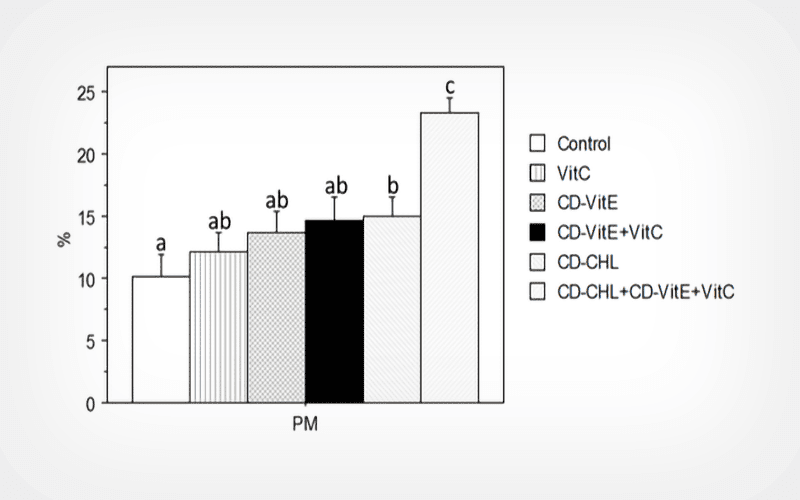
CryoLetters 46 (4), 238-250 (2025)
© CryoLetters, editor@cryoletters.org
doi.org/10.54680/fr25410110512
Endoplasmic reticulum stress genes and apoptosis-related genes effect cryotolerance: two comparisons of BALB/c and CD-1 mice
Aysel ERASLAN SAKAR1*, Oguz Kaan YALCIN2, Cengiz YILDIZ3 and Firdevs YILMAZ DAYANC4
- Hatay Mustafa Kemal University, Faculty of Veterinary Medicine, Department of Genetics, Hatay, Türkiye
- Hatay Mustafa Kemal University, Faculty of Veterinary Medicine, Department of Reproduction and Artificial Insemination, Hatay, Türkiye
- Yalova University, Faculty of Medicine, Department of Medical Biology, Yalova, Türkiye
- Hatay Mustafa Kemal University, Department of Reproduction and Artificial Insemination, Hatay, Türkiye
*Corresponding author’s E-mail: ayseleraslan@gmail.com
Abstract
Background
The inbred C57BL/6 and BALB/c mouse strains are widely recognized and used as foundational models for mutagenesis studies globally. Analyzing molecular damage at cellular and genetic levels from freeze-thaw processes in different mouse strains is crucial for understanding how to preserve sperm function and reproductive efficiency.
Objective
To examine intraspecific variations in fresh and frozen-thawed sperm from outbred (CD-1) and inbred (BALB/c) mouse strains.
Materials and methods
Sperm cryopreservation utilized 3% (w/v) skim milk powder and 18% (w/v) raffinose as cryoprotectants.
Results
Post-thaw analysis showed significantly higher progressive sperm motility (p<0.05), intact plasma membrane integrity (p<0.01), and viability (p<0.05) in CD-1 frozen-thawed sperm than in BALB/c. The mRNA expression of XBP1, GRP78, and IRE1 was significantly higher in BALB/c frozen-thawed sperm (p<0.001). CHOP mRNA levels showed no significant variation (p>0.05). BAX mRNA was significantly upregulated in both strains after freezing (p<0.001). While TCP11 mRNA showed no significant differences (p>0.05), PDIA3 mRNA increased significantly post-thaw (p<0.001).
Conclusion
Cryopreservation quality was superior in outbred CD-1 sperm compared to inbred BALB/c sperm, evidenced by better post-thaw parameters and elevated endoplasmic reticulum stress-related genes (XBP1, GRP78, and IRE1) and PDIA3.
Keywords: apoptosis; BALB/c, CD-1; cryopreservation; ER stress; gene expression; inbred; mouse; outbred.

CryoLetters 46 (4), 252-260 (2025)
© CryoLetters, editor@cryoletters.org
doi.org/10.54680/fr25410110712
The lipidomic profiling of ovine sperm reveals metabolic alterations and key biomarkers after cryopreservation
Jiachen Bai1,2#, Guizhen Zhou1#, Jun Li3#, Yucheng Liu4, Jingjing Wang4, Yanhua Guo4, Zhenliang Zhang4, Weijun Liu4, Aiju Liu1, Wendell Q. Sun2, Pengcheng Wan4* and Xiangwei Fu1,4*
- State Key Laboratory of Animal Biotech Breeding, Key Laboratory of Animal Genetics, Breeding and Reproduction of the MARA, National Engineering Laboratory for Animal Breeding, College of Animal Science and Technology, China Agricultural University, Beijing 100193, China
- Institute of Biothermal Science and Technology, School of Health Science and Engineering, University of Shanghai for Science and Technology, Shanghai 200093, China
- Department of Reproductive Medicine, Reproductive Medical Center, The First Hospital of Hebei Medical University, Shijiazhuang 050000, China
- State Key Laboratory of Sheep Genetic Improvement and Healthy Breeding, Institute of Animal Husbandry and Veterinary Sciences, Xinjiang Academy of Agricultural and Reclamation Sciences, Shihezi 832000, China
*Corresponding authors’ E-mails: xiangweifu@126.com and wanpc0815@sina.com
#Contributed equally as first authors
Abstract
Background
Lipids plays a vital role in sperm capacity acquisition, and yet the effect of cryopreservation on lipid profile has received little attention so far.
Objective
To evaluate the change in lipids of ovine sperm upon cryopreservation.
Materials and methods
Ovine semen was aliquoted into two parts: one being the fresh control and the other used for cryopreservation. The targeted lipidomic analysis was performed between fresh and cryopreserved sperm samples.
Results
Cryopreservation resulted in 53 up-regulated and 163 down-regulated lipids. Down-regulation prevails. Most differentiated lipids were glycerophospholipid, fatty acyl, glycerolipid, sphingolipid, prenol lipid and sterol, and they were highly correlated with one another (correlation coefficient r > 0.8). Major pathway enrichments were glycerophospholipid metabolism, glycosylphosphatidylinositol-anchor biosynthesis, glycine, serine and threonine metabolism, biosynthesis of unsaturated fatty acids, actin cytoskeleton regulation, pathogenic infection and autophagy. In glycerophospholipid metabolism, the phosphatidyl-ethanolamine Class II series and phosphatidyl-L-serine Class II series had the largest numbers of differentially-expressed lipids, some significantly down-regulated and others up-regulated. In contrast, all lipids of the 1,2-diacyl-sn-glycerol-3P Class II series were significantly down-regulated.
Conclusion
Cryopreservation altered the sperm lipid profile, and the changes in 1,2-diacyl-sn-glycerol-3P, phosphatidyl-ethanolamine and phosphatidyl-L-serine can be good biomarkers for sperm quality change.
Keywords: biomarker; cryopreservation; lipidomic; sheep; sperm.
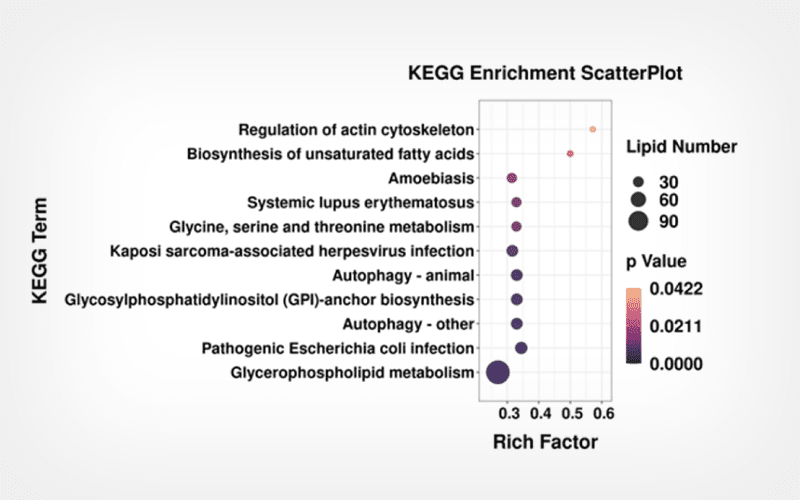
CryoLetters 46 (4), 261-273 (2025)
© CryoLetters, editor@cryoletters.org
doi.org/10.54680/fr25410110212
Morphological and functional analysis of cryopreserved human sperm: comparison of different freezing protocols
Claudia Omes1*, Monica Savio2, Giuliano Mazzini3, Chiara Citterio4, Andrea Casasco4,5, Rossella Elena Nappi1,6 and Federica Riva4*
- Center for Reproductive Medicine, Obstetrics and Gynecology Unit 2, Woman and Child Health Department, Fondazione IRCCS Policlinico San Matteo, Pavia, Italy
- Department of Molecular Medicine, Immunology and General Pathology Unit, University of Pavia, Italy
- IGM-CNR, Department of Biology and Biotechnology, University of Pavia, Italy
- Department of Public Health, Experimental and Forensic Medicine, Histology and Embryology Unit, University of Pavia, Italy
- Centro Diagnostico Italiano-CDI, Milan, Italy
- Department of Clinical, Surgical, Diagnostic and Pediatric Sciences, University of Pavia, Italy
*Corresponding authors’ E-mails: c.omes@smatteo.pv.it and federica.riva01@unipv.it
Abstract
Background
Human semen and epididymal spermatozoa cryopreservation are crucial for men’s fertility preservation, particularly for those patients facing neoplastic, autoimmune, urological, and neurological conditions where medical or surgical treatments may pose a risk to fertility or where obstructive or secretory azoospermia is documented. However, there are currently no standardized methods to assure optimal cryosurvival rates.
Objective
To determine the best freezing protocol out of five selected methods based on routine sperm analysis and additional assays including cytofluorimetric analysis, comet assay, and transmission electron microscopy.
Materials and methods
The study is a cross-sectional analysis of 26 fresh semen samples frozen using five different freezing protocols (or methods, M), varying in cooling phase time and temperatures, and utilizing TEST-Yolk Buffer (TYB) as a cryoprotectant. Data on sperm motility, viability, membrane integrity, DNA fragmentation, and ultrastructural shape post-thawing were collected.
Results
Our findings showed that the method 1 (M1) and method 3 (M3) (involving a three-phase cooling process with a phase at +4°C, followed by 10 min of exposure to the gas phase of liquid nitrogen before immersion in liquid nitrogen) yielded the best protocols, resulting in minimal deterioration of semen quality.
Conclusion
These results highlight the importance of a pre-freezing phase at +4°C when using TYB cryoprotectant on untreated semen, regardless of the duration, despite the less-than-optimal survival rate achieved. It is crucial to use a range of assays to study the effects of cryopreservation procedures, not only assessing sperm motility and viability, but also evaluating membrane integrity, DNA fragmentation, and ultrastructural shape.
Keywords: DNA integrity; fertility preservation; freezing protocol; human sperm cryopreservation; methods; semen analysis; sperm motility; sperm viability.
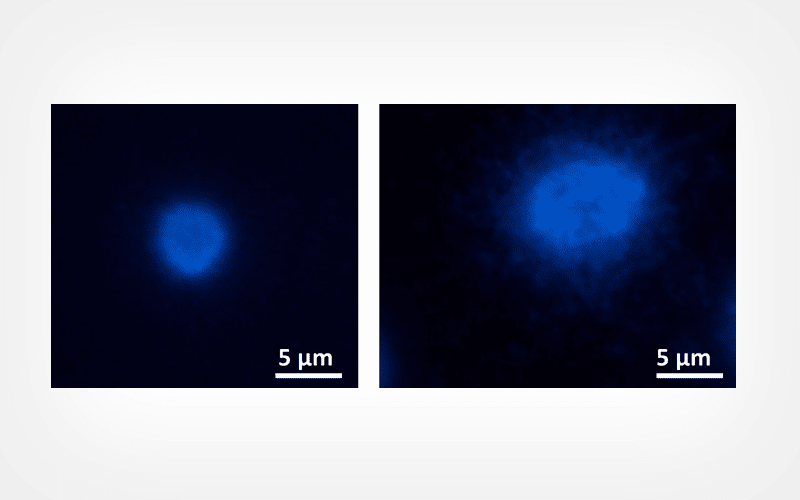
CryoLetters 46 (4), 274-286 (2025)
© CryoLetters, editor@cryoletters.org
doi.org/10.54680/fr25410110412
Expression of superoxide dismutase from the desert beetle Microdera punctipennis enhances cold tolerance in Drosophila melanogaster
Zilajiguli Xikeranmu#, Azeguli Hamuti#, Li Zhou and Jieqiong Li#*
- Xinjiang Agricultural Vocational and Technical University, 29 Wenhua East Road, Changji, 831100, China
*Corresponding author’s E-mail: 864971439@qq.com
#Contributed equally as first authors
Abstract
Background
SODs are key enzymes that degrade the superoxide radical, representing a primary defense in the antioxidant system against the toxicity caused by overproduction of ROS under environmental stresses. However, there is scarce data about SOD functions in insects under low temperature.
Objective
In this research, we investigated whether the heterologous superoxide dismutase overexpression in Drosophila melanogaster improves cold tolerance in flies.
Materials and methods
A novel extracellular copper/zinc SOD (MpSOD3) from the desert beetle Microdera punctipennis was transferred to D. melanogaster via P-element-mediated transformation. The protection effect of increased SOD activity on lipid peroxidation and apoptosis were determined by measuring oxidative parameters and TUNEL assay during cold treatment.
Results
Compared to non-transgenic flies exposed to 0°C treatment for 12-24 h period, the expression level of MpSOD3 and SOD activity were significantly higher in all transgenic lines with less accumulation of superoxide (O2•-). MpSOD3-expressing Drosophila exhibited higher survival rates compared with the control under cold and oxidative exposure. In response to cold, the MDA content and TUNEL assay showed that MpSOD3-expressing adult flies exhibited less lipid peroxidation and apoptotic damage in comparison to control flies.
Conclusion
Collectively, these results indicate that the overexpression of MpSOD3 in transgenic Drosophila lines enhances cold tolerance by eliminating O2•- and lessening over-oxidation of the cellular membrane system.
Keywords: cold stress; Cu/Zn-SOD; Microdera punctipennis; oxidative stress; superoxide radicals; transgenic Drosophila.
